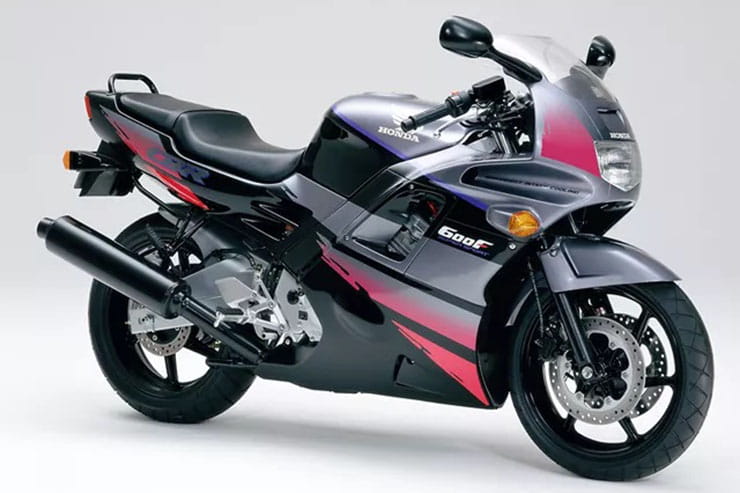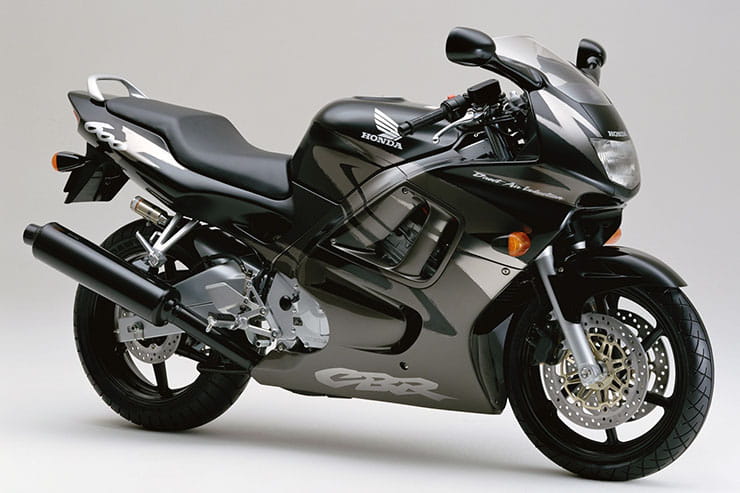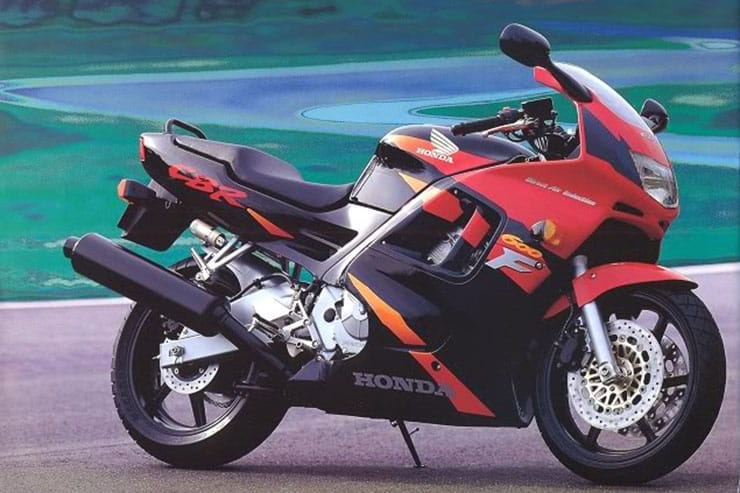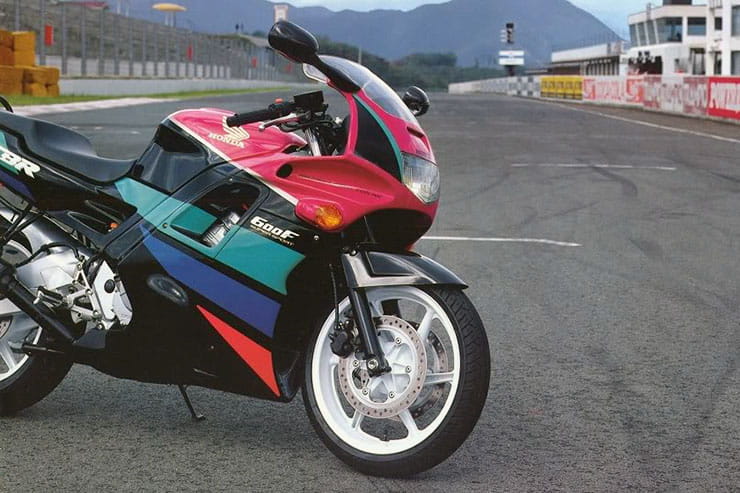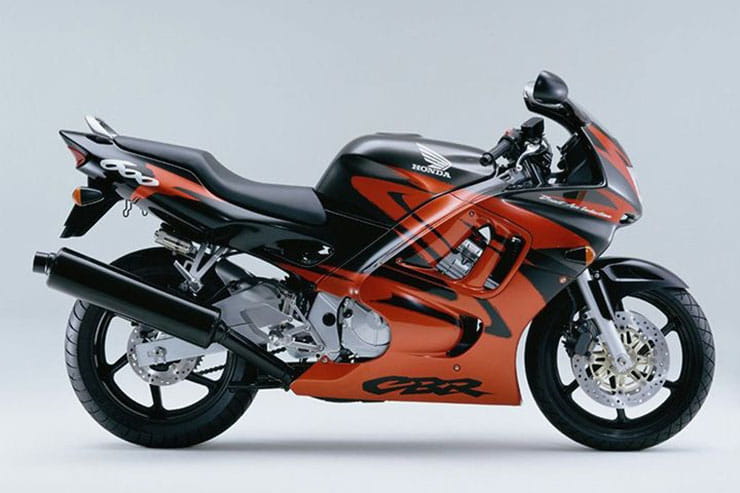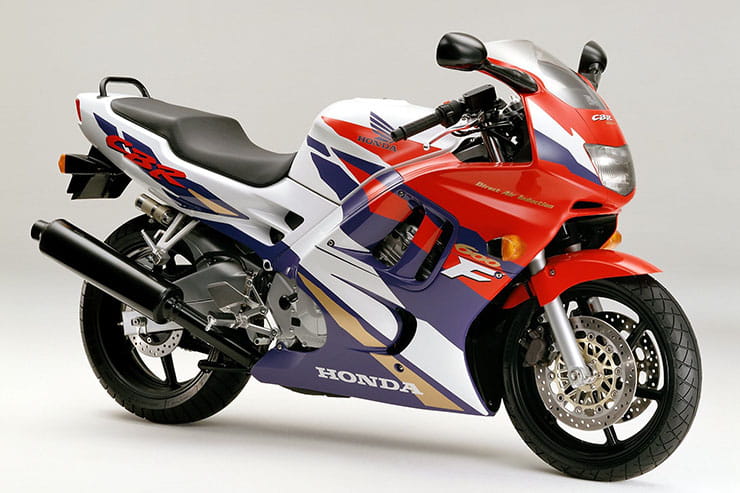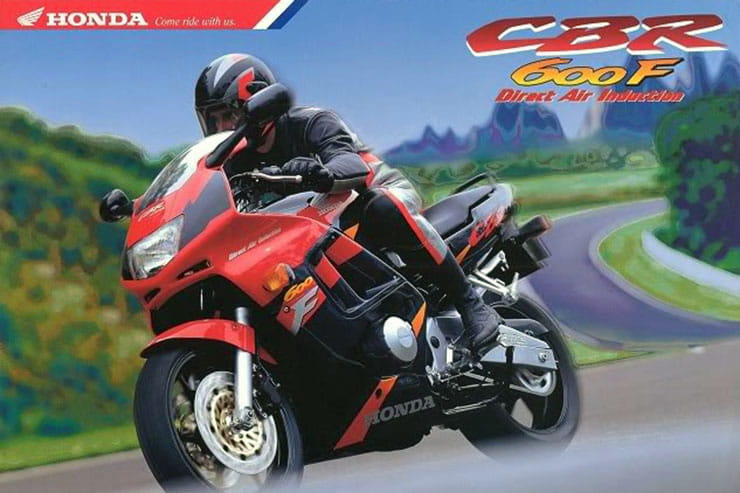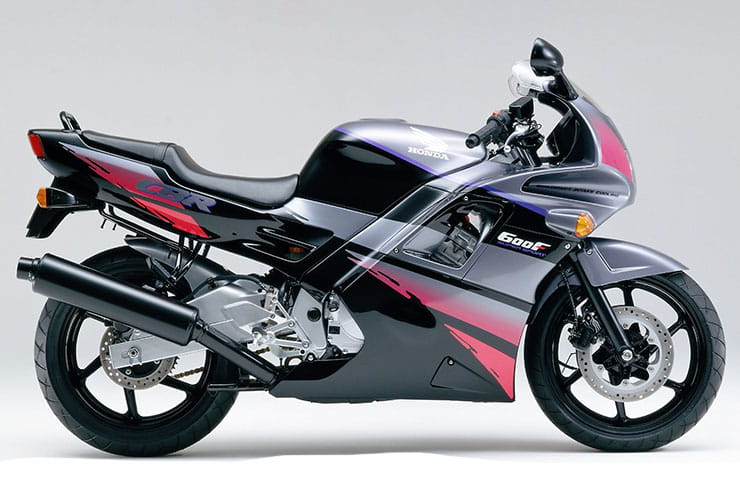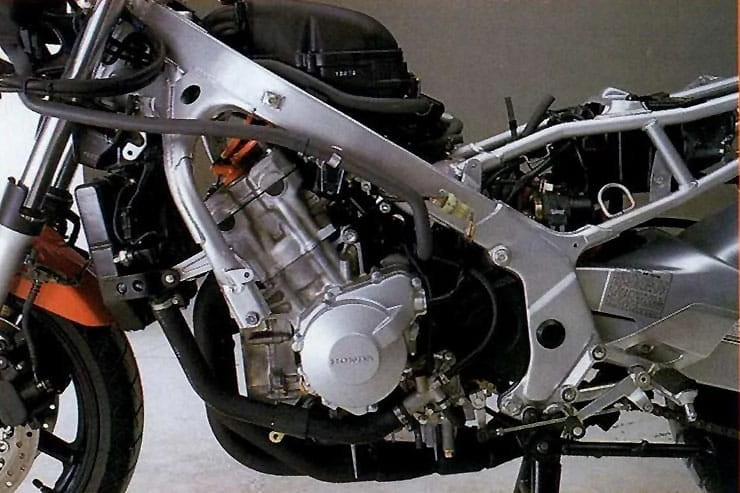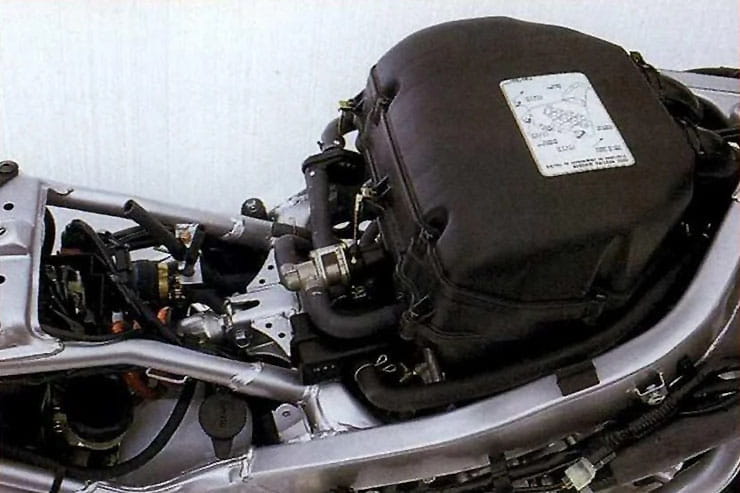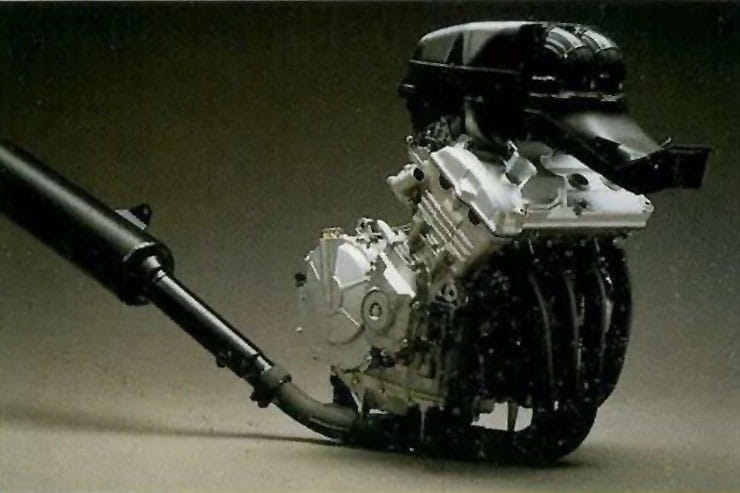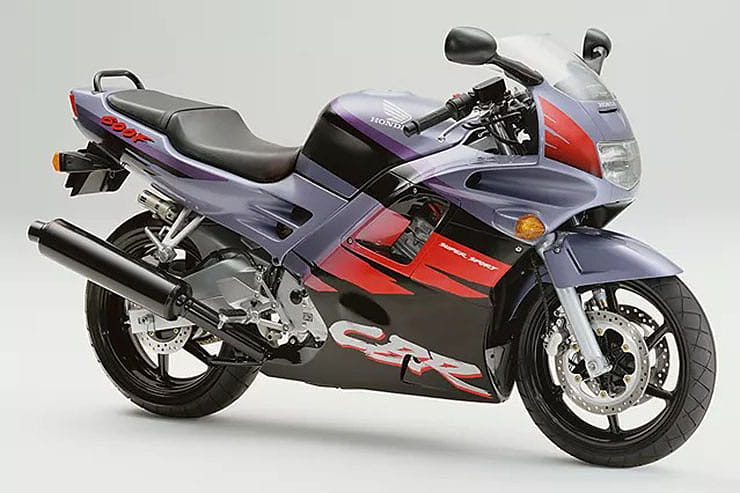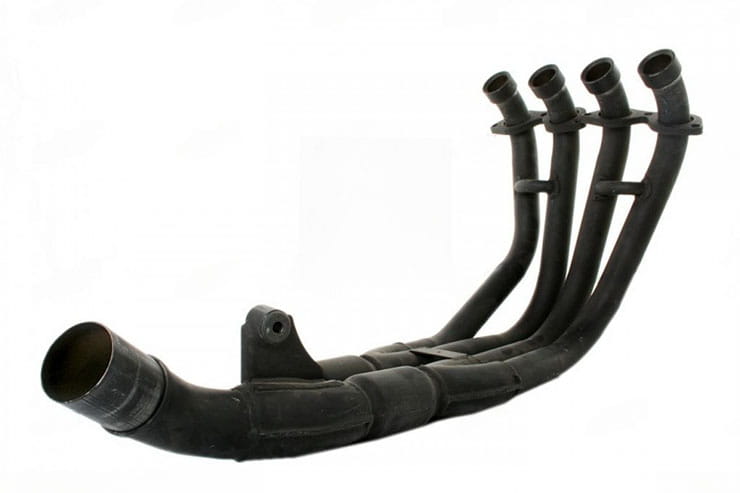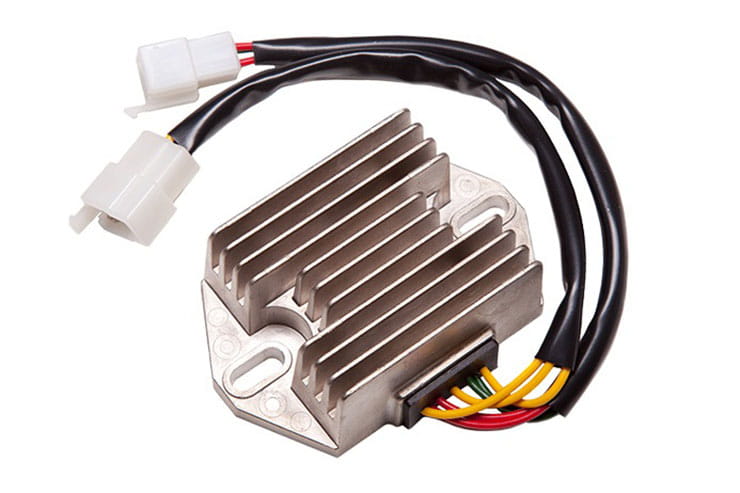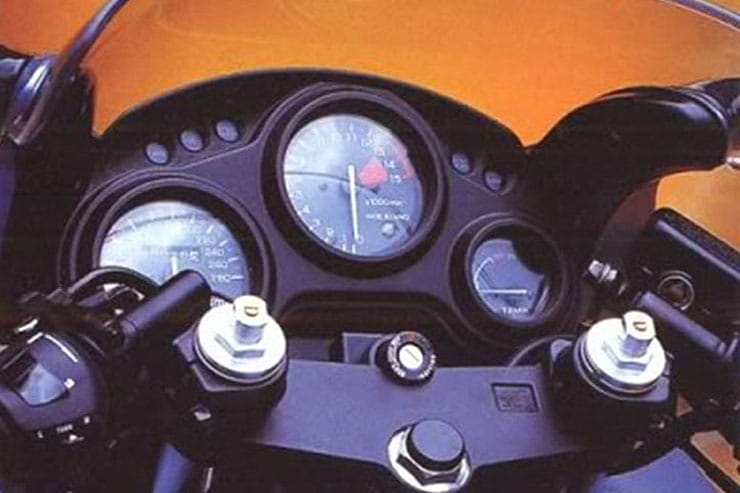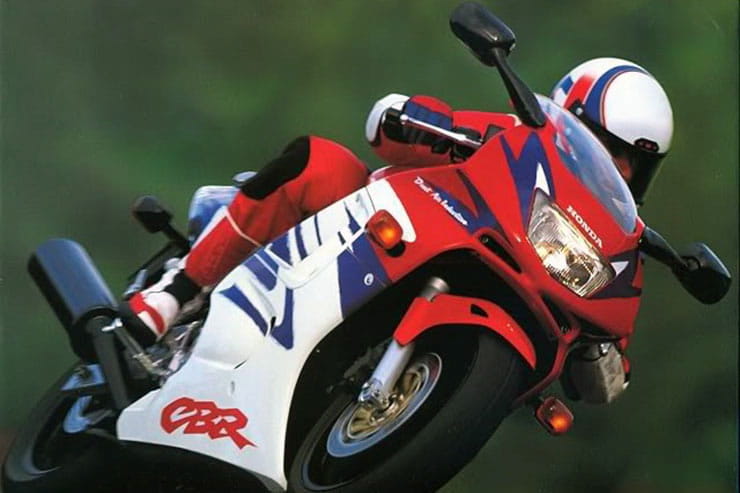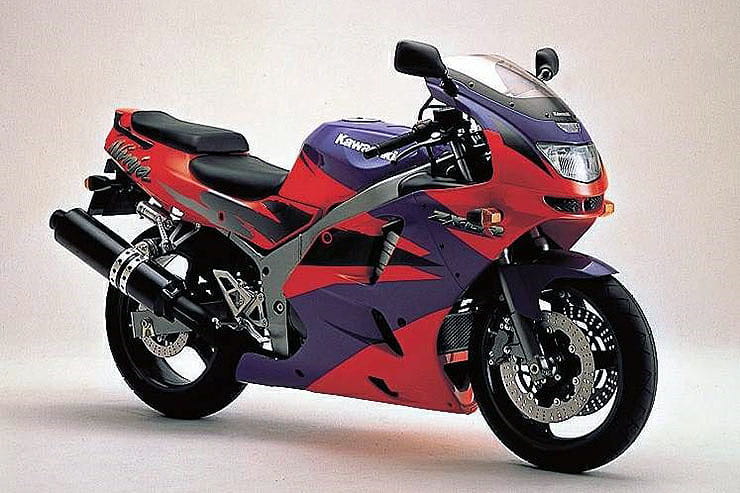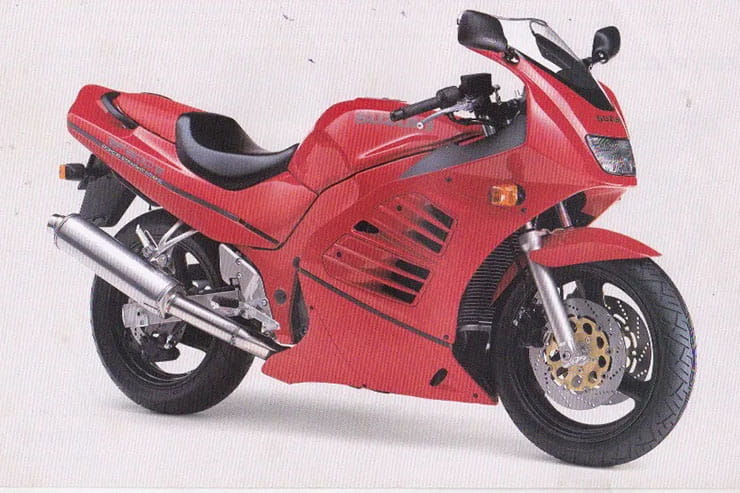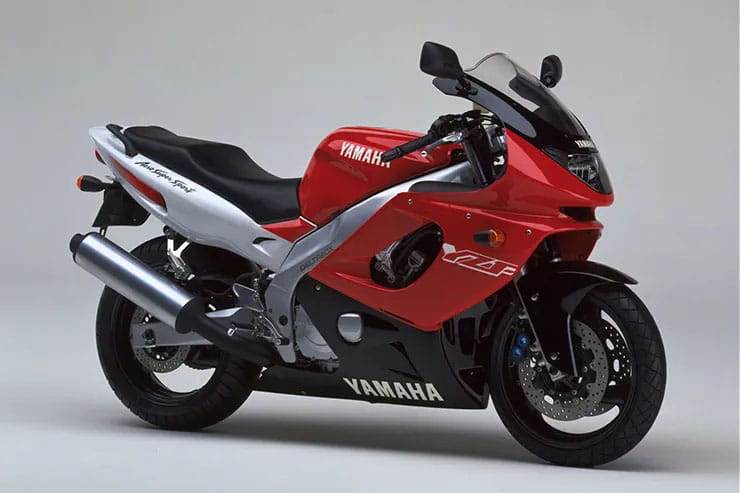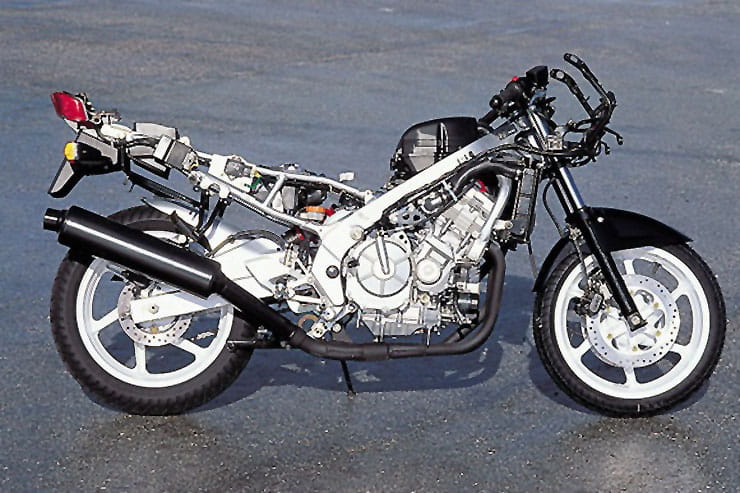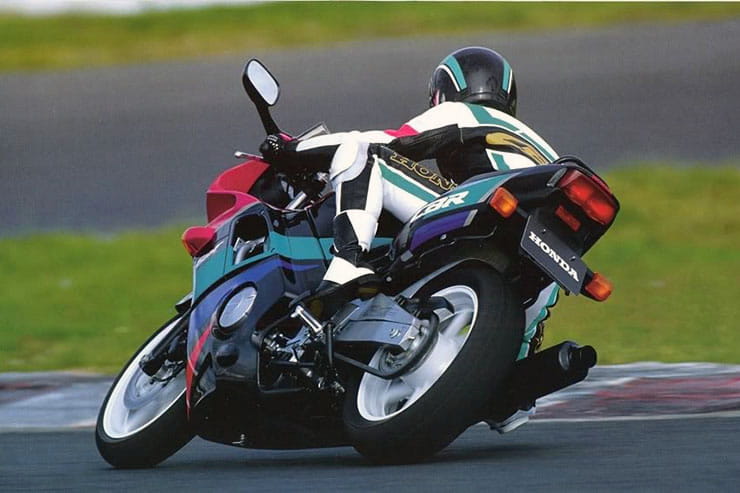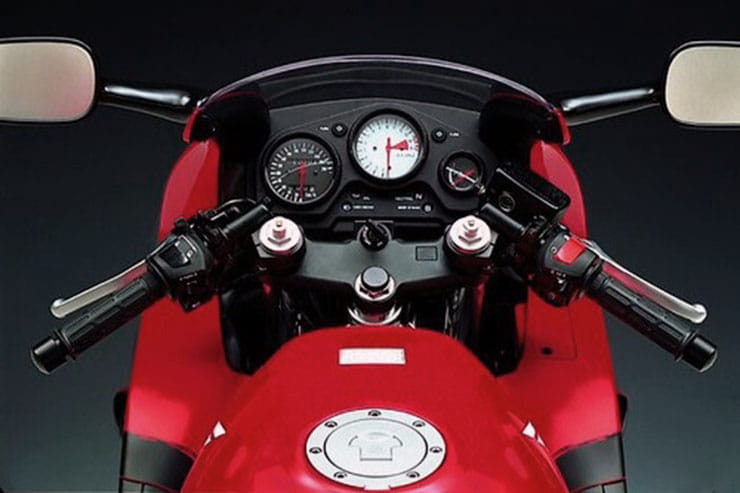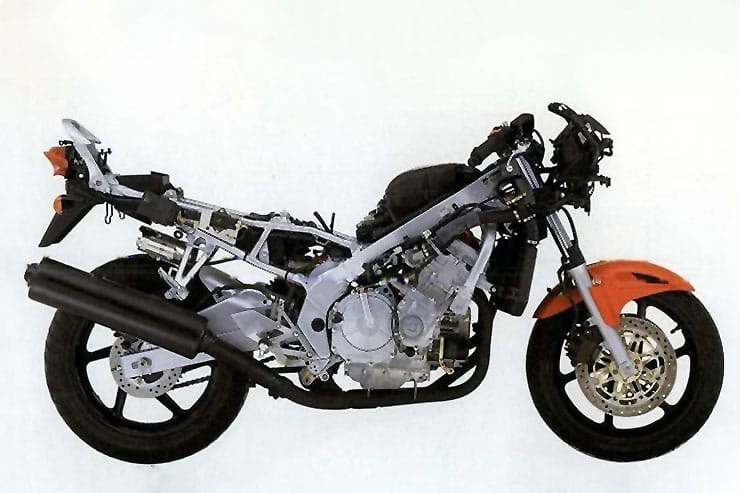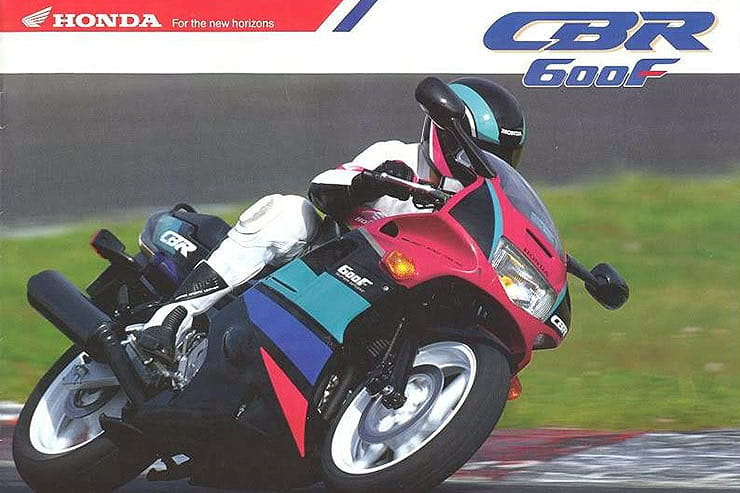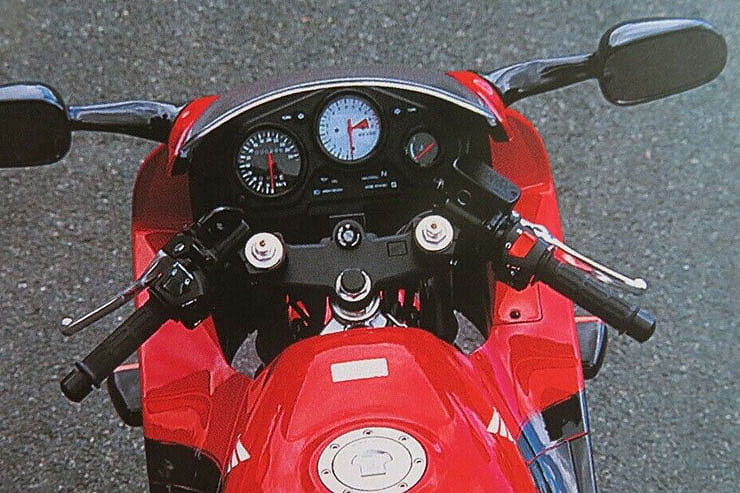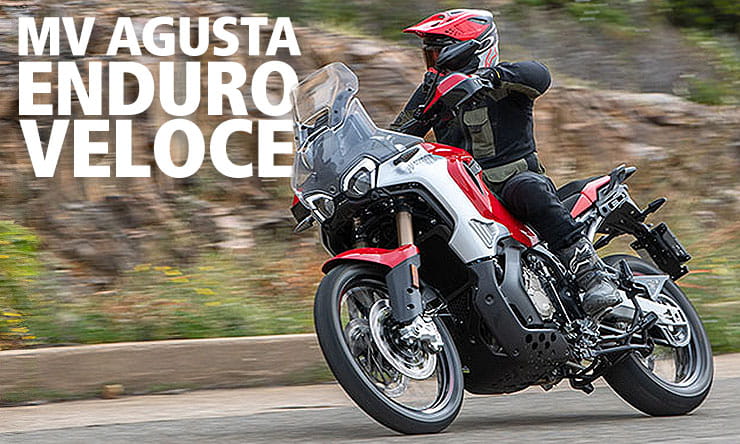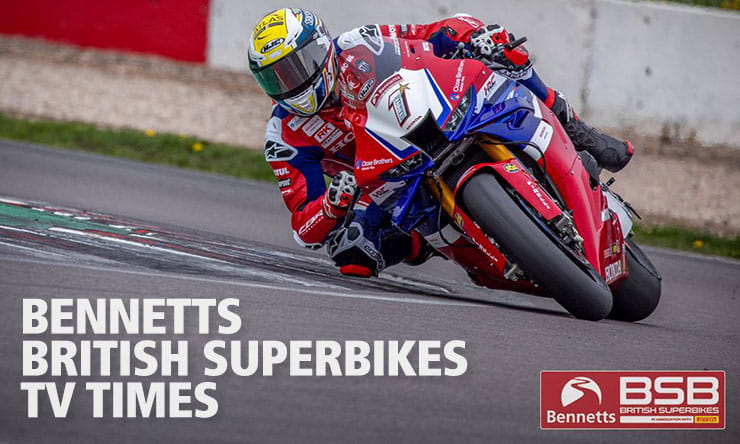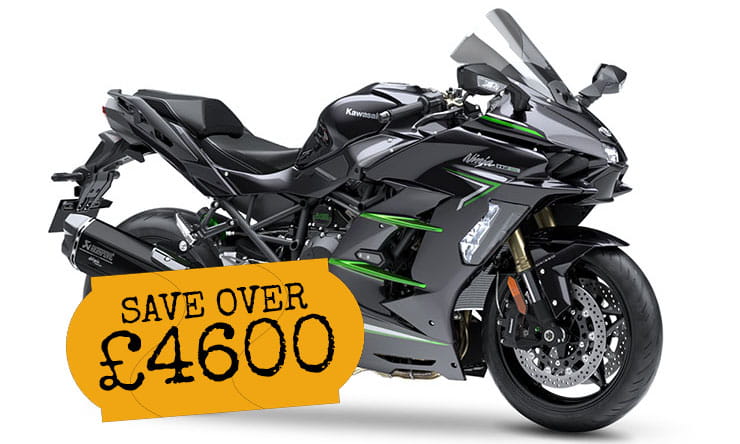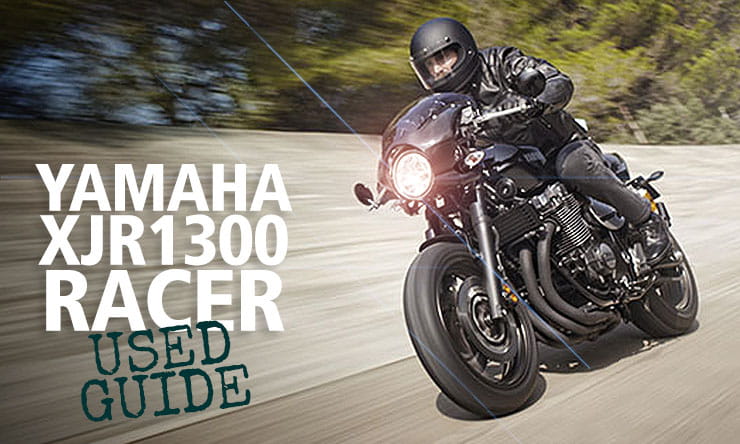Price: £1200-£3400 | Power: 100-105bhp | Weight: 186-195kg | Overall BikeSocial Rating: 4/5
The 1990s supersport 600 class was a source of constant frustration for Kawasaki, Suzuki and Yamaha. Honda’s CBR600F held a firm grip on the sector from 1987 right through the tail end of the ’90s. The CBR’s unrivalled blend of all-round ability, classy finish, and race-winning performance gave it the edge over every contender put forward by rival manufacturers. At the time, and largely because of the Honda’s brilliance, the 600 class was the hottest sports bike category of all, particularly here in the UK.
And yet underneath its all-enclosed bodywork the CBR600F was no exotic special. Nor was it an exercise in cutting edge engineering. Its liquid-cooled, DOHC, 16v inline-four engine didn’t feature gear-driven cams like the VFR750F or variable valve timing like the Japanese market CBR400F. Even its chassis was plain – box-section steel, rather than lightweight aluminium.
Honda’s masterstroke was taking simple, no nonsense, cost effective technology then honing each part to garner maximum performance. As a result, the CBR600F was always far greater than the sum of its parts. Even now, 25 years on from the last of the steel framed CBRs, Honda’s 600 is still a belting middleweight, satisfying a broad spectrum of riders from newbies and nostalgic modern classic buffs to ’90s class racers and trackday fanatics. It still is the perfect all-rounder.
Despite the CBR’s popularity and success, particularly back in the ’90s, values have yet to match those of other popular modern classics. Mint ’91 FM models can be had for as little as £1800 and even late model ’98 FWs rarely break the £3500 mark, making these Honda 600s some of the best value old school middleweights on the market.
Pros & Cons
- Brilliant all-rounder
- Popular so easy to find a good one
- Friendly handling that’s good at any speed
- Many were raced, so beware of ex-track hounds
- Body panels getting harder to find for older models
- Reg/rec failure is inevitable
Honda CBR600F (1991-1998) Price
The 1991 F-M to 1998 F-W are second generation CBR600Fs, following on from the original ‘jellymould’ model. Prices stated are based on standard-ish condition, although aftermarket pipes, uprated suspension and minor mods are common. Parallel imports were popular throughout the ’90s; many are hard to spot, having been fitted with mph speedos and left-dip headlamps from new, but don’t let that put you off – they all came off the same production line. Some North American models, known as F2s and F3s, made it to these shores too.
1991 Honda CBR600F-M: Rough £850-£1100; Tidy £1200-£1550; Mint £1800-£2100
All new CBR following on from the original ‘jellymould’ model. Steel perimeter chassis, enclosed bodywork, six-spoke wheels. 185kg, 100bhp. Colours: red/black, white/red, black/pink
1992 Honda CBR600F-N: Rough £900-£1200; Tidy £1300-£1650; Mint £2000-£2300
Tweaked graphics and colours only. Colours: black/silver, white/red, black/red
1993 Honda CBR600F-P: Rough £1000-£1300; Tidy £1400-£1800; Mint £2200-£2400
Changes to suspension, with rebound damping added to the forks and compression damping to the shock. New pillion peg brackets. Colours: black/red, red/purple, white/red/purple
1994 Honda CBR600F-R: Rough £1100-£1400; Tidy £1500-£2000; Mint £2450-£2650
Colour and graphics changes only – large CBR logo on the fairing. Colours: white/red/purple, black/purple/red, black/red/grey
1995 Honda CBR600F-S: Rough £1200-£1500; Tidy £1650-£2200; Mint £2600-£2800
New flatslide/CV 36mm carbs, electronic speedo and new clocks, increased compression and gas flow through cylinder head. Redesigned fairing, space for U-lock under pillion seat. Floating front discs. 102bhp, 186kg. Colours: red/black/yellow, white/red/violet, black/red/grey
1996 Honda CBR600F-T: Rough £1300-£1600; Tidy £1800-£2400; Mint £2750-£3000
New colours only. Colours: white/red/black, black/blue/grey, black/red/maroon
1997 Honda CBR600F-V: Rough £1400-£1700; Tidy £2000-£2650; Mint £2900-£3200
Thorough update. New forks, new front mudguard, redesigned bodywork and back end. Revised shock. 105bhp, 186kg. Colours: red/white/black, black/titanium, titanium/yellow/black,
1998 Honda CBR600F-W: Rough £1500-£1800; Tidy £2200-£2800; Mint £3000-£3400
Final steel framed CBR600. No changes from F-V model except colours. Colours: red/white/purple, orange/grey, black
Honda CBR600F (1991-1998) Engine and Performance
The 1991 CBR600F-M was all new – chassis, engine, and styling – but it grew out of the original and previously successful ‘jellymould’. The F-M engine retained central camchain architecture, but was given a redesigned combustion area, larger valves and the ability to achieve higher rpm by an increased bore (up 2mm to 65mm) and a shorter stroke (down 7.8mm to 45.2mm).
Performance was further enhanced by 2mm bigger carbs, a freer flowing exhaust system, larger airbox and a reduction in internal friction to create the world’s first (claimed) 100bhp 600. Top speed was just shy of 150mph. By comparison the first CBR600, the 1987 F-H, made just 85bhp and was all done by high 130s.
With competition white hot within the Supersport class during the ’90s, both in showrooms and on track, Honda continued to develop the CBR throughout the decade. By the time the steel framed CBR’s run came to an end in 1998, the 600F was running ram-air induction to force feed the airbox and maximise top end performance. Carb size was up again too – 36mm compared to the F-M’s 34mm Mikunis, but the motor’s basic architecture remained the same.
Performance is strong and easily accessible. Deliver is linear – quite different to the peaky GSX-R600 – with power maxing out at 12,000rpm, so to get the best from a CBR6 you still need to work the motor hard. Even so, the engine’s perfectly tractable at low speed and around town, and that’s the CBR’s greatest trick – performing perfectly in every situation. The only fly in the ointment is the gearbox, which is clunky on every model, especially through the lower gears and usually banging its way from neutral into first. Clutch rattle is common too, so don’t be alarmed if it’s a little noisy at idle until the clutch lever is pulled in.
Honda CBR600F (1991-1998) Handling & Suspension
Although beautifully designed and finished, the CBR600F was never exotic. Far from it. In one way that was its brilliance; the 600F showed that you didn’t need an expensive all-aluminium chassis to create race-winning handling. While other manufacturers went all-in with aluminium beam frames – Kawasaki’s ZX-6R and Suzuki’s GSX-R600 being the first two to up the ante – Honda stuck steadfast with its cheaper box-section steel perimeter design from 1987 right through to 1999. And to great effect.
Balance and neutrality are the CBR’s greatest attributes. Nothing fazes it. High speed stability is rarely questioned, steering is sweet, and feedback is generous. It’s a chassis that can be enjoyed and appreciated at sedate speeds or grabbed by the scruff of the neck and pushed really hard, especially on track. The only negative, particularly for racers, is the non-detachable subframe which can bend out of shape in a crash.
Obviously Honda tweaked the design through the ’90s, improving the suspension (increasing adjustment, but sticking with the same 41mm fork size from F-M to F-W) and brakes (front disc diameter grew by 20mm between 1991-1998). But by the end of the decade the competition was closing in with better, higher performing tech.
Honda CBR600F (1991-1998) What to look for
Exhaust downpipes: Mild steel doesn’t take kindly to salt and water, so most original CBR downpipes are toast by now. As a result aftermarket systems are commonplace, which are fine as long as the carbs are jetted to suit. Some systems can ruin the midrange if the carburation hasn’t been sorted.
Reg/rec: A yawningly common problem on Hondas of the era. Not a case of if the reg rec with fail, but when. Replacements are easy to come by, however. UK firm Electrex World do a quality replacement for £117.60.
Ex race bikes: CBRs were a popular and successful race machine back in the 1990s, so be mindful that some unscrupulous types will have put tatty and thrashed examples back on the road. Chips rims, mint bodywork over a scruffy chassis, and drilled sump plugs are all red flags. That said, if you know a bike’s race history and you’re aware of what you’re buying not all ex-proddie racer bikes are bad.
Cam chain tensioners: CBR6 engines are very strong and can achieve huge mileages without issue if regularly serviced. The only real is cam chain tensioner failure – you’ll hear the chain rattling about in its channel, especially around 5000rpm, if the tensioner’s not doing its job. Anything showing over 50,000 miles is likely to need a new tensioner (buy a manual one) if it’s not been sorted already.
Suspension: The CBR’s stock suspension is ok for a built-to-a-price middleweight. Preload and rebound adjustable up front and fully adjustable at the rear, it was among the best in class at the time. Now, 25-plus years later, it’ll be showing its age so it’s worth getting the forks rebuilt by a specialist and investing in a quality aftermarket shock. Check that the Pro-Link system’s linkages have been greased – fresh suspension will never give its best if run through dry bearings…
Bodywork: The 600’s standard bodywork is good quality, but many bikes will have been dropped, crashed or knocked over the years, so expect damage and patina to be present – some you won’t see straight away, such as broken fitment tangs and brackets. Replacement panels are getting thin on the ground. Panel shape and fitment changed throughout the CBR’s production run, so you’ll need to be year/model specific in any search for panels.
Honda CBR600F (1991-1998) Rivals
Kawasaki ZX-6R, 1997 | Approx Price: £1300-£2750
Power/Torque: 105bhp/47lb-ft | Weight: 187kg
Nearest rival to the CBR600F. A better all-rounder and more comfortable than the GSX-R, but still packs a sporty edge. Later ’90s ZX-6Rs cost only a bit more, yet come with more power, improved chassis and even better ergonomics. Mild steel exhaust system likely to be rotten by now. Still worth a look if you can find a good one.
Suzuki RF600F, 1996 | Approx Price: £1000-£1800
Power/Torque: 100bhp/47.4lb-ft | Weight: 195kg
Suzuki’s second middleweight all-rounder, after the GSX600F. Distinctive blocky styling and single colour paint. Comfortable and a capable road bike to boot – good two up, too – but lacks the CBR’s panache, build quality and sporting ability. Now dirt cheap, so a good option if you’re on a tight budget. Just over a grand buys a clean RF…
Yamaha YZF600R Thundercat, 1996 | Approx Price: £1200-£3000
Power/Torque: 100bhp/48.7lb-ft | Weight: 189kg
Development of the FZR600R – same chassis and engine, but wrapped in distinctive sports touring styling. No looker, but a great road bike on account of the strong engine, easy handling and comfortable ergonomics. Suspension is too soft for really hard riding and build quality is average at best. No CBR beater.
Honda CBR600F (1991-1998) Verdict
The CBR600F is a true modern classic – brilliant when new, and head and shoulders above its competition – and still an excellent machine now. More comfortable than a GSX-R600, better looking and put together than a Thundercat, and a greater all-rounder than a ZX-6R. But best of all, still as cheap as chips.
If you’d like to chat about this article or anything else biking related, join us and thousands of other riders at the Bennetts BikeSocial Facebook page.
Honda CBR600F (1991-1998) – Technical Specification
|
Original price
|
£6995 (1998)
|
|
Current price range
|
£1200-£3400
|
|
Capacity
|
598cc
|
|
Bore x Stroke
|
65mm x 45.2mm
|
|
Engine layout
|
liquid-cooled, DOHC, 16v, inline-four
|
|
Power
|
105bhp (80kW) @ 12,000rpm
|
|
Torque
|
48.6lb-ft (66Nm) @ 10,500rpm
|
|
Top speed
|
156mph
|
|
Transmission
|
6-speed, wet, multi-plate clutch, chain final drive
|
|
Average fuel consumption
|
43 mpg
|
|
Tank size
|
17 litres
|
|
Max range to empty (theoretical)
|
160 miles
|
|
Reserve capacity
|
n/a
|
|
Rider aids
|
none
|
|
Frame
|
Box-section steel perimeter
|
|
Front suspension
|
41mm telescopic forks
|
|
Front suspension adjustment
|
Adjustable preload and rebound damping
|
|
Rear suspension
|
Monoshock
|
|
Rear suspension adjustment
|
Adjustable preload, compression and rebound damping
|
|
Front brake
|
2 x 296mm discs, 2-pot calipers
|
|
Rear brake
|
220mm disc, 2-pot caliper
|
|
Front tyre
|
120/70 ZR17
|
|
Rear tyre
|
160/60 ZR17
|
|
Rake/Trail
|
25.2°/94mm
|
|
Dimensions (LxWxH)
|
2055mm x 835mm x 685mm
|
|
Wheelbase
|
1405mm
|
|
Ground clearance
|
139.5mm
|
|
Seat height
|
810mm
|
|
Dry weight
|
186kg
|
Looking for motorcycle insurance? Get a quote for this motorbike with Bennetts bike insurance



